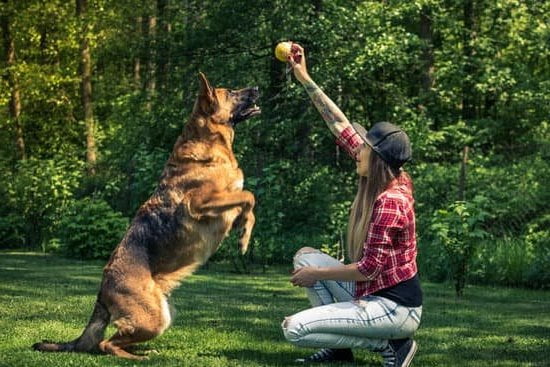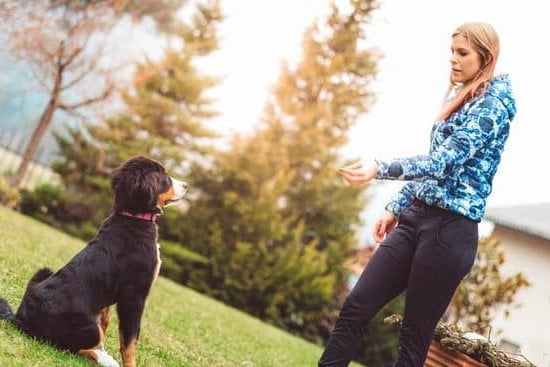Introduction
The importance of guard dogs cannot be overstated. Guard dogs provide both companionship and protection for their owners. They can alert you to danger and help you protect your home, property, and family from intruders.
Fortunately, with proper training, almost any puppy can become a great guard dog. The key is to start the training when your pup is young and take him through a series of steps that will ensure he’s obedient and reliable in times of need.
To begin with, make sure your puppy is comfortable and familiar with his new environment by introducing him to people he may encounter while on duty (like neighbors or visitors). You can do this by giving these people treats or praise after they have given attention to your pup as well as making sure they do not pay too much attention to him as this could disrupt his guard duties.
Next, it’s important that your pup develop good manners so that he knows who is allowed access onto the property. This means setting boundaries right away by having consistent rules on who you allow into the yard or house so that your pup will naturally grow accustomed them without having been explicitly told how to do so. Teaching commands such as “stay” and “come” are also important for effective guarding behaviors.
In addition, teaching your pup not to bark excessively or in undesired circumstances will help encourage good behavior when it comes time to serve as a guard dog. Teach your pup when it’s appropriate to bark—such as when someone suspicious is near the area—and when it isn’t so he understands the difference between barking at danger and barking at friends or family members simply for attention.
Finally, socialization training should also be part of every pup’s guard-dog-in-training program; this helps puppies learn how to interact properly with other people and animals without feeling anxious or threatened by them—something essential if they are going to serve as an effective guard dog. Take walks around the neighborhood or go visit other friendly pups at parks so your canine friend can get acquainted with different environments safely. Doing this before fully taking on his role as a true guardian will help ensure success in fulfilling his duties later down the line!
Research and Planning
Before bringing home a puppy and training it to become a guard dog, there are several important details that owners should consider. One of the first steps is researching the different breeds of dogs that are known for having protective and loyal tendencies, such as the German Shepherd, Rottweiler and Doberman. Other than considering their reputation for being protective, owners should also look into adapting the lifestyle around them, such as making sure they have plenty of physical exercise to expend energy which can be helpful in alleviating aggressive tendencies caused by boredom. Additionally, owners should educate themselves about basic canine behavior to properly handle a dog and be aware of signs that could indicate any potential issues. Furthermore, it’s essential to inform yourself on how guard dogs are trained – it’s not something that occurs overnight after all. Depending on your needs, you may need to seek professional help from an experienced trainer who can keep everyone involved safe while teaching them the proper techniques they need to do their job effectively.
Choosing the Right Dog Breed
When it comes to choosing the right breed for guard duty, there are a few essential traits you should look out for. Firstly, size and strength should be taken into consideration. Large, sturdy breeds such as Rottweilers, German Shepherds, Doberman Pinschers, and Bullmastiffs are generally considered ideal guard dogs. These breeds usually possess the physical strength necessary to defend against intruders. Secondly, intelligence is an important factor for guard dogs and many of the aforementioned large breeds are also highly intelligent. In addition to intelligence, certain guard dog breeds commonly have protective personalities as well as strong protective instincts which drives them to alert family members of perceived danger and intervene if necessary. Another important trait that can be beneficial in a guard dog is loyalty; some dogs will fearlessly defend their owners regardless of the threat they face. Consider these traits when looking at different dog breeds and make sure any puppy you plan to get has these qualities in order to have a successful outcome later on.
Early Training and Socialization
Training and socializing your puppy early on is essential to encouraging positive behaviors. Starting out with basic commands, such as sit and stay, and introducing the pup to different people, places, and things will help them get used to their environment. It’s also important to establish a consistent routine for them – crate training is an ideal way for accomplishing this. During their socialization period, it’s best to expose your pup to different toys, activities, and environments in order to accustom them to the world around them.
The key element in training a guard dog is teaching them how and when to be alert. This involves introducing puppies to “alert” noises, such as people talking or a doorbell ringing. Instill obedience by encouraging your pup every time they respond correctly and immediately rewarding good behavior after they do so. You can also use positive reinforcement by offering treats or other rewards when they recognize certain sound cues or act appropriately when presented with a situation that requires attention.
It’s also essential to get your puppy familiarized with the boundaries of one’s property or yard; do so by walking near or within the area while maintaining absolute control over their leash at all times—this way you’re able to reinforce proper responses in an authoritative fashion should your pup display aggression towards strangers passingby outside of the property’s borders.
Finally, enrolling your puppy into advanced guard dog classes may be beneficial for teaching canine instincts such as barking only when necessary and responding strategically during situations that require self-defense abilities from a guard dog-in-training.
Basic Obedience Training
Training your puppy to become a guard dog should begin with basic obedience training. It is important to begin with the essential commands such as come, stay and lie down. During this stage, it is most effective to keep your training sessions short but regular in order to avoid over-exhausting or confusing your puppy. You can also introduce commands like sit or heel during this initial Obedience Training phase.
Once you have trained the fundamental commands and your puppy shows signs of better comprehension and control, then you can move on to more advanced forms of Guard Dog Training. This involves teaching them protection techniques such as barking audibly at strangers in the vicinity or when feeling threatened. You may also have to work on natural defensive instincts by simulating different types of attack scenarios and introducing unfamiliar sounds (such as gun shots).
In addition, you may need to review simple defensive exercises like snarling or lunging when required and practice ignoring certain ‘distractions’ so that your pup remains focused while on duty in a real-world situation. Finally, guard dog training should include socializing; this is necessary for dogs so they can interact well with people without being overly protective or aggressive in any given situation.
Command and Control Training
Command and control training is the process of teaching your puppy to respond to verbal commands and helping them learn self-control. It will help your puppy become obedient, allowing them to act calmly and less impulsively.
To begin command and control training, start by teaching simple commands such as “sit”, “stay”, and “come”. Use treats or praise to reward your puppy each time they respond correctly. As they progress, introduce more difficult commands such as ‘heel’ or ‘down’ over a period of weeks or months. Teach the puppy that when they hear those words they must immediately obey.
You can also use clicks or whistles with specific commands. Every time you want the puppy to sit, use a designated click or whistle and then follow up with a verbal command like “Sit!”. This ensures that your puppy will recognize the sounds associated with certain behaviors just like any other verbal command.
Finally, practice handling your pup in public settings like the vet, groomers or parks so that their obedience does not fail in distracting environments. Training cones can also be used for exercises where distractions such as balls are placed around from which your puppy needs to separate and then obey their masters orders despite all these fluctuations in environment!
Protection Training
Protection training for puppies to become guard dogs is a job that must be taken seriously and carried out safely under the guidance of an experienced professional. It consists of strategic approaches and practical techniques utilized to accomplish the desired behavior. The process begins with building trust and reliability between the trainer and puppy while introducing basic obedience commands, such as sit, stay, and come. These commands should be repeated in different situations so the puppy will understand them even in a chaotic or stressful environment.
Once obedience is established, the trainer can move to protection training. Here, they will simulate “threats” like a burglar entering the home, another person being aggressive toward the owner or pet, etc., to condition the puppy to respond appropriately when exposed to these situations. This often involves teaching cues such as “guard” or “attack” to let your pup know it’s okay in these types of scenarios. The next step is developing bite inhibition, which helps your guard dog learn how much pressure he/she should use before biting someone uninvited entering your home. This should be done using toys like burlap bags filled with treats, which encourage play-biting rather than actually biting hands or faces. After your pup has mastered these steps, it can begin more advanced protection drills such as patrolling in which you practice calmly walking together throughout a room without allowing distractions from strangers/intruders outside of your home as well as table training wherein you familiarize your pup with responding properly when given various verbal commands near tables with items placed on top representing a potential threat such as a weapon or intruder in disguise.
Training Difficulties
Puppy training can be difficult because puppies are easily distracted and not always consistent with their behavior. To prevent the puppy from becoming overwhelmed, it is important to keep the training sessions short and focus on just a few skills at a time. Additionally, have plenty of treats and positive reinforcement on hand to reward the pup for their successes. Accidents will happen during potty training, so try not to become frustrated if the pup does something wrong; instead, always remain positive and correct them with consistent verbal cues. Finally, it is important to remember that consistency is key when raising any dog—including puppies—so create a routine for the puppy ahead of time and stick to it as much as possible. This way, your pup will know how to behave in most situations with no confusion or upset.
Ongoing Training Maintenance
A reliable guard dog requires consistent and continual training after basic commands have been learned. Here are some tips to ensure that your puppy remains a successful and attentive guard dog:
• Positive Reinforcement Training: Utilize positive reinforcement techniques such as verbal praise, treats, or toys when your dog follows commands well or shows desired behavior. This will reinforce good behaviors and help your pup better understand what is expected of them.
• Exercise: Physical activity is essential in keeping a healthy, active guard dog. Regular physical exercise, such as running, playing fetch, or going for walks helps reduce boredoum and encourages good behavior.
• Structure Schedules: Establish specific routines for feeding times and potty breaks to give structure to your pup’s day-to-day life. Having daily routines also helps keep stress levels at bay.
• Socialization: Exposure to new people and animals on walks can help desensitize your pup to strangers that enter the home space. Start from a distance and gradually move closer as the pup becomes more confident around others.
• Training Sessions: Make sure that you implement regular training sessions with your pup weekly in order to keep their skills sharpened and response levels fast. Daily short sessions of 1 minute each are ideal for quick recalls on commands such as stay or down.
Conclusion
Training a puppy to become a guard dog is an important and rewarding task. Through target training, obedience commands, socialization and desensitization, owners can establish expectations while teaching their puppy how to detect suspicious activity and remain alert. By understanding the importance of committing fully to the process and never trying to rush it, owners can ensure that their pup develops into a trained, loyal guard dog.
To maximize the protection of a home or property, owners should ensure that their puppy receives thorough training in order to deter or respond to potential danger responsibly. Regular reinforcement during snack time or playtime will help keep motivation levels high and progress steady. Establishing clear boundaries early on should be key to preventing any unwanted behaviors from emerging over time.
In conclusion, guard dogs remain an invaluable asset for secure homes and businesses due to their ability to guard loved ones from external threats. Despite the challenges associated with it, proper training for puppies can ensure that they grow up into reliable protectors. Owners must commit to frequent practice and consistent reinforcement as they teach obedience commands as well as proper response mechanisms when suspicious activity is detected. With these guidelines in mind, any owner should now have what it takes to effectively train their own guard dog.

Welcome to the blog! I am a professional dog trainer and have been working with dogs for many years. In this blog, I will be discussing various topics related to dog training, including tips, tricks, and advice. I hope you find this information helpful and informative. Thanks for reading!





